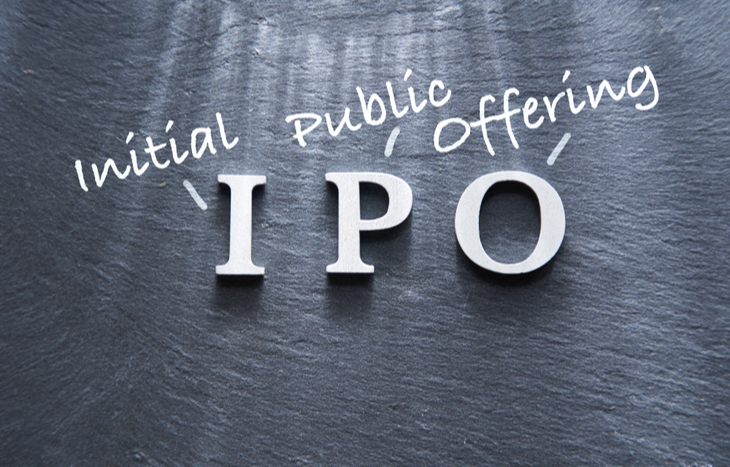What Is an IPO?
A company’s IPO can be a great investment opportunity. But if you haven’t heard of the term before, you might be wondering, “What is an IPO?”
This article will give you a quick guide to IPOs, including what they are and how they work. Let’s get started…
What Is an IPO?

IPO stands for initial public offering. This is when a private company offers shares to the public for the first time. It allows everyday investors to buy shares of the company. It also lets the company raise capital.
Some investors credit the Dutch with the first IPO. In 1602, the Dutch East India Company went public with an initial public offering of company shares. It was the first company to issue bonds and shares of ownership to the public. More than 400 years later, it’s become common practice for many industries.
Initial public offerings can often be a sign of the economy’s health. When the economy is performing well, more companies will IPO. That’s because the new shares are likely to have higher demand from investors and increase in value. But when the economy is facing a downturn, IPOs can be rare. Market volatility creates uncertainty and a company likely won’t get the best value for its stock.
But raising capital is only one reason companies go public.
Why Go Public? Advantages vs. Disadvantages
Capital is often the main reason a company IPOs. Companies look for funding to grow or to pay off debt. But there are other reasons a company might decide to go public.
The Advantages
First, if a company is looking to raise capital, an IPO widens the range of available investors. Before 2016, only accredited investors and angel investors (aka business angels) were able to invest in private companies. And new crowd-equity laws passed in 2016 apply mostly to startups, rather than well-established businesses.
So, by holding an IPO, a company can raise capital from public investors. It also makes it easier to raise funds in the future through a secondary offering. This is the selling of more new shares to the public.
Another reason a company might go public is to increase transparency. When a company IPOs, it’s required to file paperwork with the Securities and Exchange Commission (SEC). This paperwork includes information such as audited financials and company strategies. And all that information is available to the public.
This can make it easier for the company to receive better borrowing terms. A public company might also attract better employees by being able to offer stock as compensation. Although private companies also do this, potential employees are able to see how well a public company’s stock is performing. If it’s doing well, a stock offer could provide greater incentive to join the company. An IPO can also increase a company’s brand awareness.
Finally, going public can allow companies to make acquisitions more easily. If a company is going to be acquired, its public shares will help determine its value. And if a company is looking to be an acquirer, it can use shares as a means of purchase.
However, an IPO isn’t for every company.
The Disadvantages
One of the biggest obstacles for companies is the cost that comes with an IPO. The IPO process isn’t cheap. There are accounting, marketing and legal costs, which usually continue after the offering is over. So maintaining a public company can be expensive.
Also, to go public, a company’s information must be public. That means competitors have access to that information and can use it to their advantage. This could be the company’s structure or business model, or which section of the market most of its revenue comes from.
Another disadvantage is pricing risk. What if the IPO fails? If this happens, the company won’t raise the amount of capital it needed. There’s also an increased legal risk from shareholder action and regulators. And new shareholders can gain voting rights that allow them to influence company decisions.
Finally, a company that holds an initial public offering requires additional attention to succeed as a public company. Because company information becomes public, management needs to be on top of reports throughout the business. The process will also take a dedicated team to ensure the IPO’s success. And the process can take months, or in some cases, more than a year.
How the IPO Process Works
As mentioned, the IPO process is a long one. There are seven steps a company takes to go public…
- Choose an underwriter
- Fill out the paperwork
- Find investor demand in IPO roadshows
- Price the IPO
- Go public
- Stabilize the IPO
- Transition to market competition.
Each step often involves a long, detailed process. For a deeper look into the IPO process, check out our Guide to Going Public.
If you’re looking for the latest investment opportunities, Investment U is the place to be. Sign up for our free e-letter below! It’s full of useful tips and research from our experts. Whether you’re a beginner or an experienced investor, there’s something for everyone.
Now that you know what an IPO is, you can start investing in them. Some recent IPOs include SelectQuote, Vroom and Kingsoft. You can also look into pre-IPO investing. This can get you in before a company goes public. So, when shares do hit the market, you could make gains.
[adzerk-get-ad zone="245143" size="4"]About Amber Deter
Amber Deter has researched and written about initial public offerings (IPOs) over the last few years. After starting her college career studying accounting and business, Amber decided to focus on her love of writing. Now she’s able to bring that experience to Investment U readers by providing in-depth research on IPO and investing opportunities.





